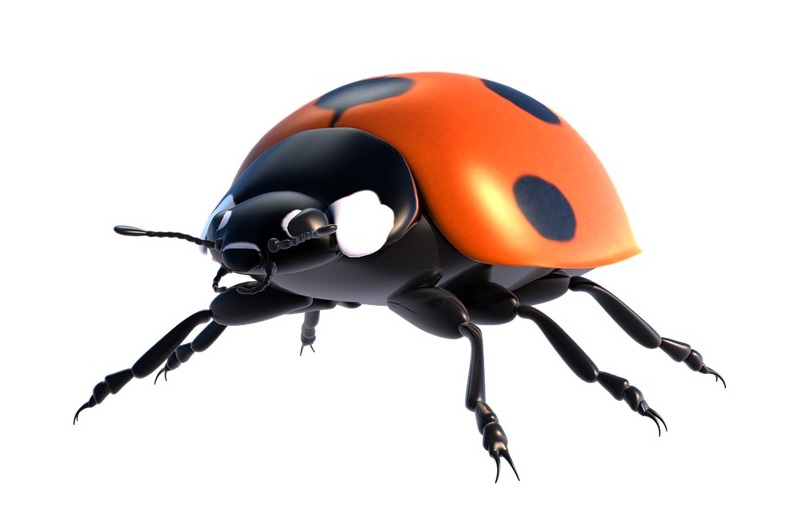Agrochemicals
The enemy of my enemy… 19th February 2018
By our Editorial Team
A new generation ‘hybrid’ products, that combine the powers of biological agents and synthetic chemistries, may present

A new generation ‘hybrid’ products, that combine the powers of biological agents and synthetic chemistries, may present a new era in pest control.
Biological control is a method of controlling pests such as insects, mites, bacteria and fungi, using other organisms. A simple example with which many of us will be familiar is the gentle encouragement of ladybirds by gardeners. These pretty, yet voracious, little predators will suck the life-blood from aphids and greenfly, providing a natural solution to common garden insect pests. As well as predators, biological control agents commonly include parasitoids, and pathogens such as bacteria, fungi and viruses. These organisms kill or debilitate their hosts, and they are relatively host-specific.
This specificity is an important advantage of biological control. Many host-parasite or prey-predator relationships are specific ones that do not affect other organisms, meaning that the application of a biopesticide should have minimal impact on local biodiversity beyond the target pest. In light of recent concerns about bee populations and other insect pollinators, for example, this is an increasingly important consideration.
Other advantages of biological control include the absence of long-lasting residues, which minimize environmental, legal and public safety concerns. Pests are also unlikely to develop ‘resistance’ to natural enemies, as they may do to chemical pesticides, meaning that solutions can continue to be effective for longer.

Manufacturers, growers and consumers can all appreciate the benefits of adopting and using biological controls, and this recognition has fuelled the industry’s growth over the past couple of decades. In fact, the global biological control market, which began from rather modest size in the 1990s, is now a multibillion dollar business that is growing at a much faster rate than the conventional crop protection industry. Companies involved in the R&D and/or manufacture of biological products include some of the biggest names in the business, including BASF, Bayer, DuPont, FMC, Koppert, Monsanto and Syngenta.
However, the balance of nature dictates that, although biological agents may control pest populations to a degree, they are unlikely to ever completely eradicate target pests, or offer the efficacy of a synthetic pesticide. And faced with a growing world population and its perpetual demands on the food chain, we must be pragmatic. In order to maintain the yields required by the world’s population, it needs to be acknowledged that synthetic chemistry will continue to be a backbone of the crop protection industry for the foreseeable future.
Nevertheless, advocates of natural solutions need not despair. The new kid on the block is the hybrid.
Increasingly, there is a move toward finding the right biological products and technologies that complement synthetic products, and which enable growers to minimize the overall chemical load (and residues), and improve safety. This approach has evolved in recent years to form the basis of many ‘integrated pest management’ (IPM) solutions, as industry groups and governments have advocated the use of traditional, biological and synthetic approaches to pest control in carefully devised integrated programmes. However, these programmes can be complex to plan and implement. A novel answer to this complexity is the emergence of pre-mixed hybrid products that combine both synthetic and biological active ingredients.
Stockton (STK), a company that develops and produces botanical-based solutions for food protection, launched its first hybrid in 2017. The hybrid product, Regev, combines a botanical extract from the Melaleuca alternifolia (tea tree) bush and difenoconazole, a broad-spectrum fungicide that is widely used as a spray or seed treatment. The result is a non-toxic solution, with a lower synthetic chemical load, and multiple mechanisms of action that can help minimize the emergence of resistance.
Similarly, chemical giant BASF’s research on biological solutions has always been viewed as complementary to the company’s chemical crop protection. In 2016, BASF opened a new R&D centre for biological crop protection in Limburgerhof, Germany. “With BASF’s unique skills in research and state-of-the art formulations, we are one of a few companies that can provide a seed treatment with a mixture of both biological and chemical compounds,” said Philipp Rosendorfer, Vice President R&D Functional Crop Care for BASF’s Crop Protection division, at the time.
The advantages of these products, which combine synthetic and biological active ingredients, offer a route to more sustainable agriculture, without the efficacy limitations usually associated with ‘pure’ biological pest control, and avoiding the complexity of bespoke IPM programmes.
In the words of Guy Elitzir, CEO of STK, speaking at last year’s Chemical Industry Regulations Conference Biopesticides Session, “We think hybrids will accelerate the integration of biological solutions into conventional programmes.”
This development should mark a positive move for the agricultural industry, and for the speciality chemicals companies that service it, as it enables us to move further toward a more sustainable future and a cleaner, safer world.



